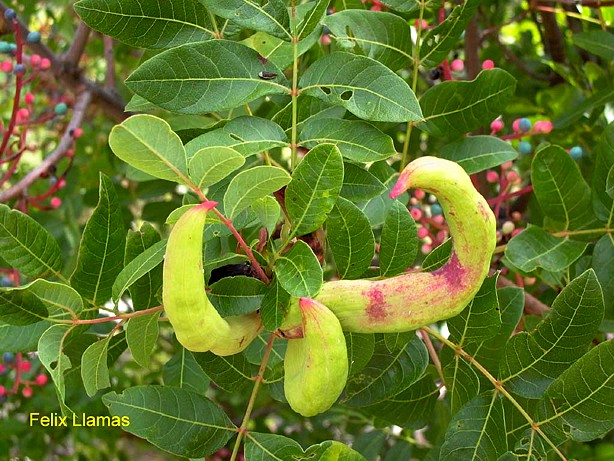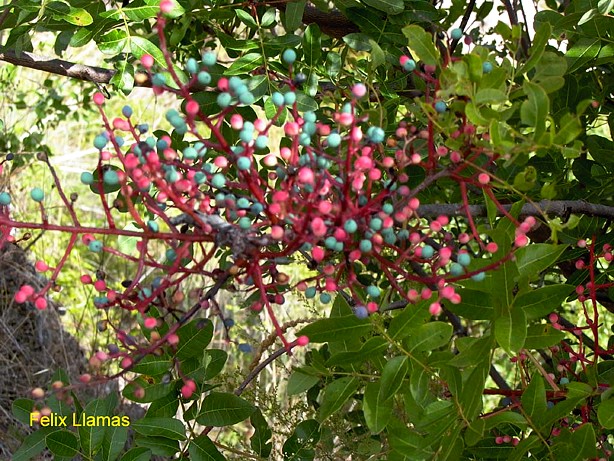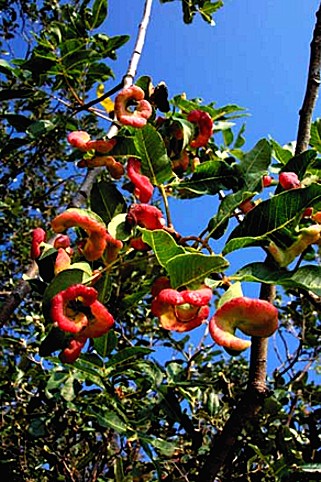Lessico
Terebinto
Pistacia terebinthus

Arbusto della famiglia Anacardiacee diffuso nella macchia mediterranea. Alto alcuni metri, ha foglie imparipennate, a segmenti ovali o oblunghi, coriacee e caduche; i fiori, raccolti in pannocchie, sono dioici, giallastri e poco appariscenti.
I frutti sono piccole drupe ovali, dapprima di colore rosso e poi nere. È usato come portainnesto del pistacchio e fornisce, per incisione del fusto, un'oleoresina (trementina di Chio).

Terebinth (Pistacia terebinthus) also called turpentine tree is a species of Pistacia, native to the Mediterranean region from the western regions of Morocco, Portugal and the Canary Islands, to the eastern regions of Turkey and Syria. It is a small deciduous tree or large shrub growing to 10 m tall. The leaves are compound, 10-20 cm long, odd pinnate with five to eleven opposite glossy oval leaflets, the leaflets 2-6 cm long and 1-3 cm broad. The flowers are reddish-purple, appearing with the new leaves in early spring. The fruit consists of small, globular drupes 5-7 mm long, red to black when ripe. All parts of the plant have a strong resinous smell.
John Chadwick believes that the terebinth is the plant called ki-ta-no in some of the Linear B tablets. He cites the work of a Spanish scholar, J.L. Melena, who had found "an ancient lexicon which showed that kritanos was another name for the turpentine tree, and that the Mycenaean spelling could represent a variant form of this word."
Terebinth is mentioned in the Bible (primarily the Hebrew Scriptures/Tanakh or Old Testament), for example in Isaiah 1:29, where the Hebrew word "el" or "elim" is often translated as oak or terebinth:
For you will be ashamed of the terebinths that you have taken pleasure in.
Terebinths are also mentioned in three successive chapters of Genesis (12:6, 13:18, 14:13) in reference to the places where Abram (later Abraham) camped.
There are at least a few references in Judges; Ch 4 (in reference to Heber, the Kenite, of the children of Hobab), Ch 6 (in reference to an angel of the Lord who came to visit Gideon. Most versions use 'oak'), and Ch 9 (in reference to the crowning of Abimelech, by the terebinth of the pillar that was in Shechem. Most versions use 'oak').
Terebinth is also referred to in Virgil's Aeneid, Book 10, line 136 where Ascanius in battle is compared to "ivory skilfully inlaid in [...] Orician terebinth" ("inclusum[...] Oricia terebintho [...] ebur")
Terebinth is referred to by Robin Lane Fox in Alexander the Great: "When a Persian king took the throne, he attended Pasargadae, site of King Cyrus's tomb, and dressed in a rough leather uniform to eat a ritual meal of figs, sour milk and leaves of terebinth."
It is used as a source for turpentine, possibly the earliest known source. The turpentine of the terebinth is now called Chian, Scio, or Cyprian turpentine. The fruits are used in Cyprus for baking of a specialty village bread. In Crete, where the plant is called tsikoudia, it is used to flavor the local variety of pomace brandy, also called tsikoudia. The plant is rich in tannin and resinous substances and was used for its aromatic and medicinal properties in classical Greece. A mild sweet scented gum can be produced from the bark, and galls often found on the plant are used for tanning leather. Recently an anti-inflammatory triterpene has been extracted from these galls.
